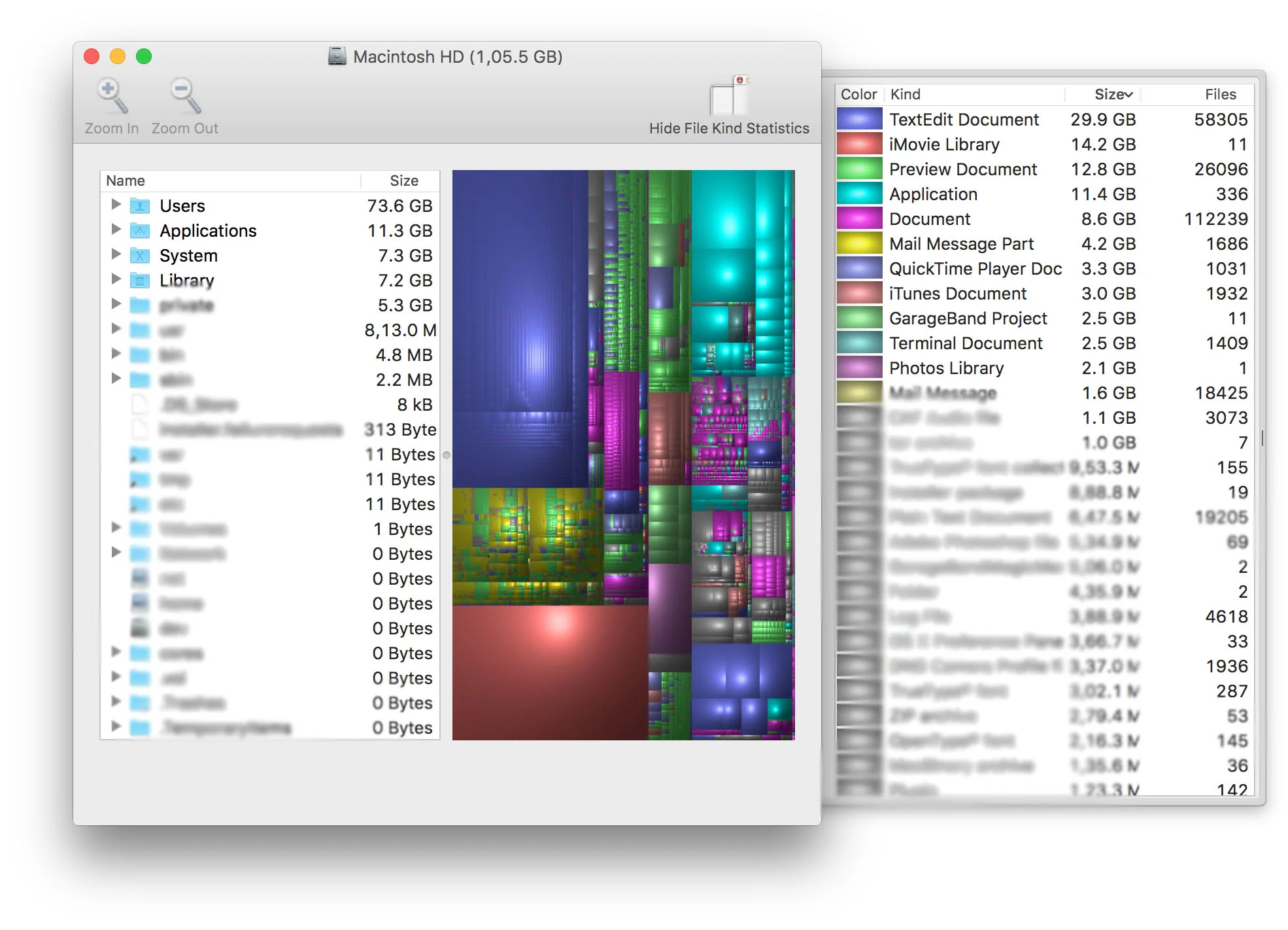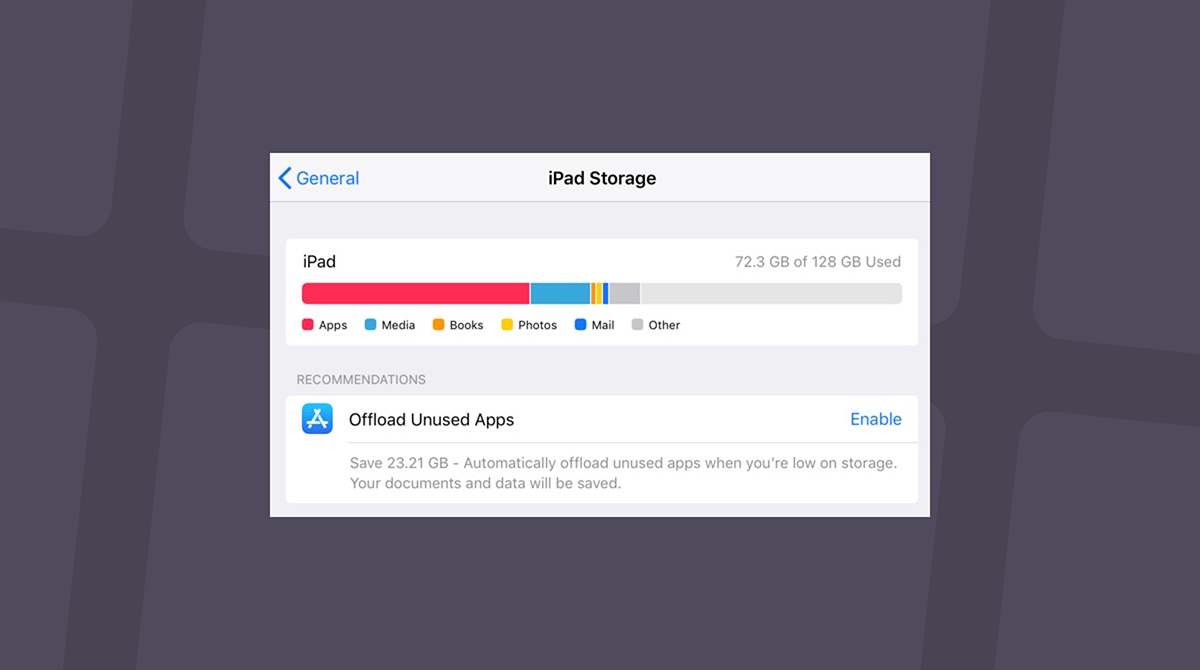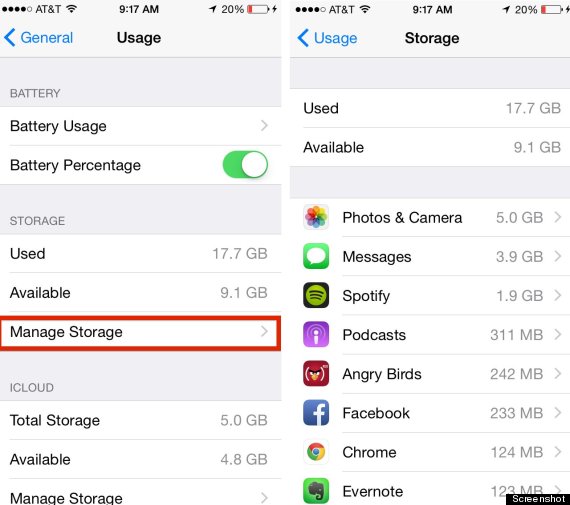Music, movies, and other media can use a lot of storage space. Learn how to delete music, movies, and TV shows from your device. Delete other files that you no longer need by moving them to the Trash, then emptying the Trash. The Downloads folder is good place to look for files that you might no longer need. Garmin Support Center is where you will find answers to frequently asked questions and resources to help with all of your Garmin products.
What is taking up space on my hard drive?
If you haven’t got space on your computer for that new app or game, or the clutter on your hard drive is just driving you crazy, you’re not alone.
With the introduction of SSDs (solid-state drives) offering loads less space than traditional mechanical hard drives, in conjunction with games and applications requiring more and more disk space, your hard drive can easily become full.
In this article, we’ll go through the top 8 ways to clean up your Windows hard drive: finding out what is taking up so much space on your hard drive, reducing the clutter and creating space for those all important new applications or files. So, without further ado, let’s get started…
Using Mac instead? Find out how to clear disk space on Mac >
Jump straight to:
New Update: Windows Storage Sense
Since the initial publication of this article, Microsoft have been busy working on the issue of saving space on people's computers. The amalgamation of their hard-work comes in the form of 'Storage Sense' - An all-in-one, intuitive feature which cleans a computer of unwanted files easier and more efficiently than ever before!
If you are using Windows 10, you can use this feature in place of the 'Windows Disk Cleanup' and 'Take out the Trash' sections of this article. This is because these steps are now covered by Storage Sense (Disk Cleanup and Recycle Bin are still available too if you prefer to use those, or if you are running another version of Windows like Windows 7). Let's see how to use this new feature..
- Use Storage Sense on demand
- Set up Storage Sense to run automatically
How to use Storage Sense on demand
If you don't need to clean up your computer files very often, or if you want control over exactly what files are deleted, I would recommend using Storage Sense on demand, rather than allowing it to run automatically. Here's how:
- Click your Windows icon and open 'Settings'.
- Click 'System'.
- Select 'Storage' from the list on the left.
- Under 'Storage Sense', click 'Free up space now'.
- Your computer will be scanned for temporary files which may want to delete.
- Once the scan is complete, tick the files you want to delete.
- Click 'Remove Files' to permanently delete the files from your computer.
How to configure Storage Sense to run automatically
If you often need to clean up your computer for temporary files and like the sound of automating the process, I would recommend using Storage Sense to automatically and periodically clean up your files. Here's how:
- Click your Windows icon and open 'Settings'.
- Click 'System'.
- Select 'Storage' from the list on the left.
- Under 'Storage Sense', click 'Change how we free up space automatically'.
- Choose your preferences (set when you would like Storage Sense to run, what to delete, and how long).
- Once you're happy with your selections, toggle Storage Sense on.
- Click 'Clean Now' if you want to start your first scan now.
The tool is great, right? It's a massive improvement over the separate, hard-to-find features from before. However, it still does not deal with duplicate files, uninstalling unused programs and more.. Jump to: finding and deleting duplicates now >
1. Windows Disk Cleanup
Windows comes with a handful of great tools to help keep your computer’s storage nice and tidy. The problem is, not everybody knows where to find these functions, or what to look for.
Disk Cleanup is the first of these tools. It allows you to delete data such as temporary files, which can amount to GB’s (gigabytes) of data over time.
To access the Disk Cleanup function:
- Go to your Computer window (Start -> Computer)
- Right-Click your hard-drive and select ‘Properties’
- Under the ‘General’ tab, click ‘Disk Cleanup’
- Windows will scan your drive and let you know how much space you can save by running Disk Cleanup
- Select the files that you wish to delete form the drive, and hit OK
Another function to mention here is ‘Clean up system files’. Using this function, you can remove older Windows restore points from your drive, leaving only the most recent one. If you wish to use this function, please ensure that your computer is running as expected, as once the restore points are removed, you will not be able to fall back to them.
To use ‘Clean up system files’:
- Click Clean up system files
- Go to the ‘More Options tab’ in the Disk Cleanup window
- Click ‘Clean up…’ under the ‘System Restore and Shadow Copies’ heading
2. Uninstall Programs
For many computer users, most of the disk space used is by applications and games. If you find that you no longer use certain programs, you can uninstall and remove them from your hard drive.
Again, Windows provides the ability to easily get rid of any unwanted programs that we may have on our computer. To uninstall/remove programs, follow the steps below:
- Start -> Control Panel -> Uninstall a program
- Sort the list of programs by file size by clicking the ‘Size header’. Now you can see which programs take up the most space on your computer.
- Click any program that you wish to remove, and click ‘Uninstall’
3. Remove Duplicate Files
It is likely that you’ve accumulated duplicate files over time, which are unnecessary for the running of your computer. Unfortunately, Windows does not provide an easy way to find and remove these duplicate files, so a third party software is needed.
There are a number of applications for the removal of duplicate files, but we’ll look at Duplicate Sweeper here. Duplicate Sweeper has a clear and easy interface, and finds and removes duplicates easily.
Let Duplicate Sweeper automatically select duplicate files for removal, using your preferences, or select individual files yourself.
Duplicate Sweeper can find duplicate files, photos and music on your computer, and remove them for you, freeing up loads of space for the stuff you really want.
Try Duplicate Sweeper free ▼
Receive an email with a link so you can download the free trial on your computer:
Note: We respect your privacy. We won't share your Email address with anyone else, or send you spam.
On a similar point, you can also delete any duplicate tracks in iTunes which can take up a lot of disk space. This function can be found in iTunes -> File -> Library -> Show Duplicate Items. From this list you can delete any duplicate tracks.
However, if you have loads of duplicate files listed, which ones should you delete? To manually go through each track and pick the best may take some time. For this reason, many people use a third-party software to help out.

One such application is Tune Sweeper. Tune Sweeper can quickly search your iTunes library for duplicates, and automatically select which to remove based on preferences such as highest quality, longest duration or latest played.
Tune Sweeper can also tidy up your iTunes library by fixing track information, downloading missing album artwork to tracks, removing missing tracks and loads more.
For more information about Tune Sweeper, or to download the free trial:
4. Temporary Files
“Wait, we just removed temporary files using Windows Disk Cleanup”, I hear you say. Yes, we deleted temporary files containing webpages, stored on your hard drive for quick viewing. Unfortunately, the Disk Cleanup method did not include files saved by external apps such as Google Chrome or Mozilla Firefox. There may still be gigabytes worth of cookies, internet history and caches stored on your computer.
You can delete this information directly from your browser, or by using a third-party application.
For example, using Google Chrome, you can open the settings menu (the 3 dots next to the address bar) -> More tools -> Clear Browsing data… From here you can select which data you wish to remove, then click ‘Clear browsing data’.
5. Take out the Trash
Some of these files which we have removed using the above steps may end up being moved to the Recycle Bin. This is a nice safety measure, because if you make a mistake and have removed a file which you now want back, you can easily restore the file from the Recycle Bin.
However, the files in the Recycle Bin are still taking up space on your computer. If you’re sure that you would like to remove the files in your Recycle Bin, you can select files and right-click to delete them, or simply click ‘Empty the Recycle Bin’ to permanently delete all of the files.
6. Store data on External Storage or in the Cloud
All previous methods in this list describe how to delete or remove files from your computer which you may not need. However, what of the files which you wish to keep, such as precious photos, video and music? These media types can accumulate to some serious storage space, but if you no longer have space for them on your PC hard drive, you still have options!
A common method for keeping data safe is to transfer it to external storage. There are 2 platforms for storing your data elsewhere from your main computer: physical storage and cloud storage.
Physical storage comes in many different shapes and sizes, but can most commonly be seen as USB Drives or external hard drives. Transferring data from your PC hard drive to an external hard drive allows you to delete the original files on your PC, while still keeping them safe in storage. Needless to say, this can clear a huge chunk of storage space on your PC.
Cloud Storage allows you to store your files on remote servers, and access them via the internet. There are many different cloud service providers: Apple iCloud and Microsoft OneDrive are only two examples. Most providers offer a certain amount of storage space free, and then give the option to pay monthly for more storage space if you should need it.
Consider also that cloud storage is not immune to duplicate files. Since many cloud services charge for more space, it is crucial to remove duplicate files to save valuable space and save yourself money. Check out our guide on how to manage Google Drive files and remove duplicates.
7. Defragment your Hard Drive
When adding a new file to your computer, a particular portion of your hard drive is allocated to store the file. However, after constantly saving and deleting files, a disk will become ‘fragmented’. This means that there are gaps in your hard drive where subsequent files would not fit, so they are left vacant.
As well as affecting your usable free space on your hard drive, fragmentation also has a negative impact on your computer’s ability to store your data in sequence, hence slowing down it’s speed.
Luckily, Windows has us covered, providing a ‘Disk Defragmentation’ tool. Using this tool, we can analyze which of our drives would benefit from defragmentation, before we commit to defragging. This is very useful, as if you have a large drive full of data, it may take a substantial amount of time to defrag.
To make use of this tool, hit your Windows icon, or Start menu, then start typing “Defragment”. From the search list, click Disk Defragmenter. Once you see the tool’s window, you can elect each drive and analyze them to determine what percentage of them is fragmented. Higher percentages mean higher fragmentation.
To defragment your disk, just hit “Defragment Disk”.
Note:
- It is not advised to defragment your hard drive too often, as the constant writing and erasing of data can reduce the lifespan of your hard drive.
- It may also be worth pointing out that there has been some debate as to whether defragmentation of SSDs (solid-state drives) is beneficial or detrimental to the drive. If you are unsure, you can read up on the discussion at PC World.
8. Sufficient RAM
RAM (Random Access Memory) is the hardware in your computer which determines how you store data. RAM stores data or instructions which you use frequently, providing fast read or write processes to improve the general speed of your computer experience.
Sounds great, right? Right. However, if you don’t have sufficient RAM, your computer will start to store the overflow of information which should be stored in RAM, in your hard drive instead. Then, when your computer wants to read or write this data, it is a much slower process between hard drive-computer than RAM-computer.
For these reasons, make sure that you have enough RAM for the processes that you generally do on your computer. It may be worth pointing out that the average user, who’s agenda may be text editing and web browsing, will not require as much RAM as a user who frequently runs multiple programs at once including photo or video editing and rendering software.
You can find out how much RAM you currently have installed in your computer by going to Computer > Properties.
When you’ve used all the available RAM on your PC or laptop you might notice the system taking way to long to complete tasks, for instance, opening the This PC on Windows 10 or open software from the start menu. This is due to all the physical and available RAM on your system is completed used. Now to make your work smoother you have to clean the computer of yours.
Now you’re thinking, how do I free up ram on windows 10? there are some ways or methods that can be used to free up ram on the computer to boost the speed of the system processing without getting more ram. In this article, we are going to share some of the easy ways to free up ram on Windows 10 PC or laptop without having a hassle.
What is RAM? And Its Use on Computer
Well, RAM (Random Access Memory) is stored in the chipset on your computer motherboard same goes for the laptop. On this chipset, the computer store the short terms data in technical terms the RAM is the hub of the storage for all the programs and activities running on the computer system.
Download dameware card reader driver. The computer used this stored information to complete the tasks while getting the data on the same time. So technically, when you used all the ram of your computer this may cause slow processing and you might seem all the programs and applications start processing slowing.
Overall the speed of your computer system performance will be decreased. To speed up your computer performance and processing can be easily increased again by cleaning some of the RAM storage on your system. Use below given methods to free up the RAM without hassle.
How To Free up ram on Windows 10 (15 Ways)
If you’re struggling with low Windows 10 system performance or 100% memory usage, High CPU. Then use these methods to free up memory on your computer system to speed up the performance and reduced memory usage.
Restart The Computer System
The Ram is volatile memory, you’ll lose its contents when your computer turned off. Restarting your computer system will clear memory saved on RAM and reset all the running programs and applications. However, this method won’t clear the complete memory but it will boost up the processing speed of the system. By cleaning up apps running on the background on Windows 10.
Update The Windows 10 & Softwares
It is most important to run an updated version of applications and software including Windows to get better system performance.
You must update all the software on your computer system along with the Windows 10 updates. For this Press Windows + I to open Windows settings. Go to the Updates & Security section and click on Windows update > check for updates.
Lookup RAM Usage
Before getting started the clean of RAM in Windows, you must see what program or application causing the RAM usage for this to follow these below-given steps.

- Press Ctrl+Shift+ ESC buttons together to open Task Manager.
- Now, Click on More Details to expand the full utility.
- Under the Processes tab, click on the Memory heard to sort the app which using more memory
For more deep information regarding the system memory usage, you can go to the Performance tab. Under the CPU section click on Memory to complete an overview of the RAM usage on your computer system. Click on the Open Resource Monitor at the bottom of the Task Manager to get more information.
Use Low Memory Management Web Browsers
If you’re using the default web browser such as Microsoft Edge or Internet Explorer on Windows 10. Then you must try to change the web browser such as Google Chrome or Firefox. Both web browser has low memory management feature that consumes less memory of the RAM. Technically these two browsers are best for memory management on Windows 10 for fast web suffering and downloading.
Remove Bloatware Apps
You must don’t know some of the bloatware apps that you’ve installed on your Windows 10 PC that you’re currently not using them. Such as Skype, WhatsApp, Facebook, Messenger, and many more. These bloatware apps use more RAM of the computer.
If you don’t really need these apps on your computer. Then follow below-given steps to remove apps from Windows 10 PC to free up memory of the computer.
- Go to the Start Menu and type in the search bar “Apps and features” and open it.
- Now, Scroll to the bloatware app for example “WhatsApp”. Then click on it.
- Select the “Uninstall” button to remove it from the PC.
- Follow the on-screen uninstallation process to successfully remove the application.
After that restart, the PC to see the performance improvement or Else move to the next method.
Disable Startup Programs & Apps
If you’re using your Windows 10 computer for more than a year. Then you’ve downloaded and installed fair more software and some of this software and now some of that software was no longer in use. By using the third method Lookup Ram usage, Now you know which program using more memory and some of these apps are on startup.
This means the startup apps will automatically start running when you start your computer system. So to avoid this you can disable the startup apps on Windows 10 to boost up the memory of RAM.
Follow these below-given steps to disable startup programs.
1. Press Ctrl+Shift+ESC buttons together to open Task Manager.

2. Now, Go to the Startup tab.
3. Right-Click on the app that you no longer use on your PC.
4. From the pop-menu, select the “Disable” button.
Clear Web Browser Cookies & Cache Files
If you’re using the web browser on a regular basis to open different types of websites daily. Well, you must that every website has its cookies and cache that will be saved into the computer memory. When visited that website, Basically the cookies and cache help the web browser to load the web page faster for the next time when you open that website.
So, if you’ve haven’t cleared the cache on the web browser that you’re using on your computer for far longer. Then you’ve saved cookies and caches in GB that consuming the memory of the RAM. You can easily free up the RAM by clearing the cookies and cache of the web browser.
Note: After removing the cookies and cache in a web browser all the auto-login credentials will be deleted. You need to again login into the website.
To clear Cache and Cookies from a web browser (Google Chrome)
1. Open the Web Browser using the Start Menu or Desktop Shortcut.
2. Now Click on the (…) icon given at the right top corner to open the menu list.
3. Select, then Settings from the popup menu.
4. Navigate to the Privacy and Security section.
5. Now, Clear the Browsing Data, Cookies, Cache.
For the different web browsers such as Microsoft Edge, Firefox, etc. There are different steps to clear the browsing history along with cookies and cache files.
Disable Background Apps
In Windows 10 lots of apps were running on the background of the system that cannot be seen in the display screen. However, these apps are consuming memory of the RAM and some of these apps are malware that affects computer running performance.
To increase the performance of the computer along with RAM memory, you’ve to stop the background running apps on the Windows 10.
1. Press Windows + I keys from the keyboard to open Windows Settings.
2. Go to the Privacy section.
3. Scroll down the left side panel. Then select “Background Apps” from the panel.
4. Now, disable the app that no longer in use.
Apps are often to run on the background of the computer system. This enables the apps to send notifications and update the software automatically which consumes lots of RAM memory without taking your permission. So you can easily turn off background apps on Windows 10 that are no longer useful.
Turn off Visual Effects
Windows 10 comes with pre-install visual effects such as tooltips, menus, and many more. This visual effect consumes lots of RAM space on the device, however, these visual effects won’t cause many issues. But if you’re device has lesser RAM then, in this case, you can disable visual effects to speed your computer performance by reducing the RAM storage.
To disable visual effects on Windows 10 follows –
1. Press Windows + E keys to open the File Explorer window.

2. Now, Right-Click on the This PC and choose Properties.
3. Go to the Advanced System Settings.
4. After, this Click on the Settings option given at the Performance section.
5. Click on “Adjust for the best performance”.
Now all the visual effects will be disabled with these settings. In case if you want to customize the visual effect settings and click on custom and select any visual effect that you want to use or like.
Modify Virtual Memory on Windows 10
In Windows, the page file that used hard disk storage and works as virtual memory and you can make adjustments in virtual memory to speed your computer and free up RAM on Windows 10.
Follow the steps to change virtual memory on Windows.
1. Open Control Panel using the Start Menu.
2. Change the Category view to Small icon (if needed)
3. Click on the “Advanced System Settings” to open it.
4. After this, on the Advanced tab, Select the Settings given under the Performance panel.
5. Switch to the Advanced tab again and click on the Change button.
Remove Web Browser Extensions
We all used Google Chrome, Firefox, or Edge browser on Windows 10. It doesn’t matter which browser you’re using on your system. However, to get additional features such as download any video from the web page we used web extension.
Technically, these extensions carry malware with them into your PC that used lots of the RAM. For instance, you can see using the Task Manager in the processes tab. Sometimes the Google Chrome using lots of RAM this is because of the extensions that you’ve installed on the Chrome browser.
To free up the ram on Windows 10 remove the unwanted web extensions from the web browser that you’re used on a daily basis such as Google Chome.
Clear Page File Before Turning off PC
When you restart your PC the page files don’t get cleared because they are stored in the memory of the RAM technically the short term files store in hard drive. So after the shutdown of the PC, the page files don’t remove the file still remain the same and consume the memory of the RAM.
Technically, clearing the page files from the PC hard drive will free up the RAM space on your computer system. Fortunately, you can make page files deleted automatically when the system shutdown. To do that follow below-given steps.
- Type “Registry Editor” in the start menu search bar.
- On the pop-up window select “Yes” to allow Registry Editor.
- On the left, scroll to, and select “HKEY_LOCAL_MACHINE ” > “SYSTEM” > “CurrentControlSet. ”
- Find and choose “Control ” > “Session Manager.”
- Now, choose “Memory Management.”
- Select “ClearPageFileAtShutdown.”
- Enter the number “1” under the value data and hit OK.
Tip: Copy and paste this link to the registry editor to avoid steps

Final Words
All these methods helped you to clear the RAM of your computer system to boost system performance. These steps help me out a lot of increase my laptop gaming performance on Windows 10. Because due to this I ‘ve free up lots of RAM storage on the device.
Clear Memory On Computer
Unlike me, you can also try all these methods to free up the RAM on Windows 10 PC or laptop to get smoother computer experience.
Clear Memory Space On Macbook
Related Articles:
